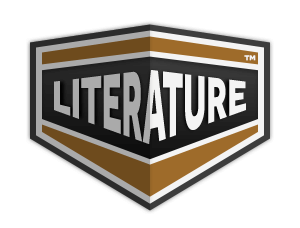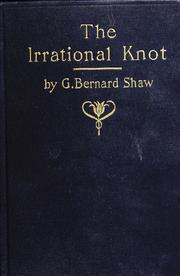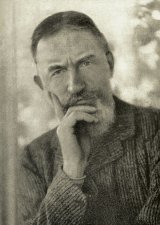The Irrational Knot Page #2
The Irrational Knot was first published in 1905, having been written in 1880. Within a framework of leisure class preoccupations and frivolities Shaw disdains hereditary status and proclaims the nobility of workers. Marriage, as the knot in question, is exemplified by the union of Marian Lind, a lady of the upper class, to Edward Conolly, always a workman but now a magnate, thanks to his invention of an electric motor that makes steam engines obsolete. The marriage soon deteriorates, primarily because Marian fails to rise above the preconceptions and limitations of her social class and is, therefore, unable to share her husband's interests.
- Year:
- 1880
- 1,106 Views
In this environment I remained for some months. As I was interested in physics and had read Tyndall and Helmholtz, besides having learnt something in Ireland through a fortunate friendship with a cousin of Mr. Graham Bell who was also a chemist and physicist, I was, I believe, the only person in the entire establishment who knew the current scientific explanation of telephony; and as I soon struck up a friendship with our official lecturer, a Colchester man whose strong point was pre-scientific agriculture, I often discharged his duties for him in a manner which, I am persuaded, laid the foundation of Mr. Edison's London reputation: my sole reward being my boyish delight in the half-concealed incredulity of our visitors (who were convinced by the hoarsely startling utterances of the telephone that the speaker, alleged by me to be twenty miles away, was really using a speaking-trumpet in the next room), and their obvious uncertainty, when the demonstration was over, as to whether they ought to tip me or not: a question they either decided in the negative or never decided at all; for I never got anything. So much for my electrical engineer! To get him into contact with fashionable society before he became famous was also a problem easily solved. I knew of three English peers who actually preferred physical laboratories to stables, and scientific experts to gamekeepers: in fact, one of the experts was a friend of mine. And I knew from personal experience that if science brings men of all ranks into contact, art, especially music, does the same for men and women. An electrician who can play an accompaniment can go anywhere and know anybody. As far as mere access and acquaintance go there are no class barriers for him. My difficulty was not to get my hero into society, but to give any sort of plausibility to my picture of society when I got him into it. I lacked the touch of the literary diner-out; and I had, as the reader will probably find to his cost, the classical tradition which makes all the persons in a novel, except the comically vernacular ones, or the speakers of phonetically spelt dialect, utter themselves in the formal phrases and studied syntax of eighteenth century rhetoric. In short, I wrote in the style of Scott and Dickens; and as fashionable society then spoke and behaved, as it still does, in no style at all, my transcriptions of Oxford and Mayfair may nowadays suggest an unaccountable and ludicrous ignorance of a very superficial and accessible code of manners. I was not, however, so ignorant as might have been inferred at that time from my somewhat desperate financial condition.
Translation
Translate and read this book in other languages:
Select another language:
- - Select -
- 简体中文 (Chinese - Simplified)
- 繁體中文 (Chinese - Traditional)
- Español (Spanish)
- Esperanto (Esperanto)
- 日本語 (Japanese)
- Português (Portuguese)
- Deutsch (German)
- العربية (Arabic)
- Français (French)
- Русский (Russian)
- ಕನ್ನಡ (Kannada)
- 한국어 (Korean)
- עברית (Hebrew)
- Gaeilge (Irish)
- Українська (Ukrainian)
- اردو (Urdu)
- Magyar (Hungarian)
- मानक हिन्दी (Hindi)
- Indonesia (Indonesian)
- Italiano (Italian)
- தமிழ் (Tamil)
- Türkçe (Turkish)
- తెలుగు (Telugu)
- ภาษาไทย (Thai)
- Tiếng Việt (Vietnamese)
- Čeština (Czech)
- Polski (Polish)
- Bahasa Indonesia (Indonesian)
- Românește (Romanian)
- Nederlands (Dutch)
- Ελληνικά (Greek)
- Latinum (Latin)
- Svenska (Swedish)
- Dansk (Danish)
- Suomi (Finnish)
- فارسی (Persian)
- ייִדיש (Yiddish)
- հայերեն (Armenian)
- Norsk (Norwegian)
- English (English)
Citation
Use the citation below to add this book to your bibliography:
Style:MLAChicagoAPA
"The Irrational Knot Books." Literature.com. STANDS4 LLC, 2024. Web. 26 Apr. 2024. <https://www.literature.com/book/the_irrational_knot_7>.




Discuss this The Irrational Knot book with the community:
Report Comment
We're doing our best to make sure our content is useful, accurate and safe.
If by any chance you spot an inappropriate comment while navigating through our website please use this form to let us know, and we'll take care of it shortly.
Attachment
You need to be logged in to favorite.
Log In